Last spring I did a presentation for Out of Chicago Live called The Dynamic Landscape. It’s a topic I’ve been thinking about for awhile, because I realized that I view the landscape not as something fixed and immutable, but as as a living, breathing, constantly changing organism.
And that view heavily influences my photography. I respond to the changes around me with my feet, my eyes, and my camera as I adapt to light, weather, and other conditions.
Claudia and I just spent nearly two weeks in Yellowstone with our friends Charlotte and Gary Gibb. And while all landscapes are dynamic, in Yellowstone that dynamic nature is particularly apparent. You’re standing on top of a giant caldera, a massive volcano that exploded 640,000 years ago, sending 1,000 cubic kilometers of rock, dust, and ash into the atmosphere. A magma hotspot still lies under the surface, and as water percolates down through the ground it gets heated, pressure builds up, and water shoots out of the ground from Yellowstone’s famous geysers. Or sometimes that hot water just bubbles to the surface, creating beautiful, colorful pools.
The topography in this caldera is relatively gentle, so most of the park lacks the kind of spectacular mountain scenery that tends to make photographer’s blood pressure rise. (Though the Grand Canyon of the Yellowstone River is pretty spectacular, and there’s plenty of that mountain scenery nearby in the Grand Tetons or Beartooth Mountains.)
But if you can appreciate smaller-scale beauty, the misty, colorful, constantly-changing scenes in Yellowstone’s geyser basins offer endless opportunities for creative photography.
On cool mornings these thermal areas generate lots of steam. Sometimes there’s enough steam to form banks of fog. More often, each spring or geyser emits its own distinct column of steam. If there’s no wind, all the columns will rise straight up. But a slight breeze will make them all slant to the left, or to the right. Or a swirling breeze will tilt some columns one way and others in a different direction, creating a crisscross pattern.
Shifting winds mean that beautiful scenes might last only seconds, so you either have to be quick, or patient enough to wait until the same conditions return. But if you wait, inevitably you’ll see a dozen other compositions that you’re missing. I tried many approaches. Sometimes I kept the camera on a tripod, but eschewed the cable release or self timer, because using either would slow me down too much. Instead, I made sure my shutter speed was fast enough to freeze any camera movement, set the drive mode to continuous, then quickly composed, focused (using autofocus), and squeezed the shutter button to capture those fleeting moments. I could have perhaps even hand-held the camera, but reasoned that the tripod would provide extra stability, and allow me to make more precise compositions.
I found these bubbling, steaming thermal areas captivating, with endless photographic potential. You’ll find a small portfolio of my images from those thermal areas below.
But that’s just the beginning. I had to photograph the geysers themselves, of course. And the Yellowstone experience wouldn’t be complete without seeing (and trying to photograph) some of its amazing wildlife. And yes, there are some beautiful big landscape scenes in this park. We had such a wonderful time in Yellowstone that we didn’t want to leave. I’ll be posting more photos soon.
Sarah Marino’s New Yellowstone eBook
As it happened, Sarah Marino sent us a pre-publication version of her new ebook just before we left for Yellowstone. It’s called Lessons from the Landscape: Yellowstone National Park. It was wonderful to read this book just before our visit. Sarah’s photographs are beautiful, and showcase her amazing eye for design and color. They also show the incredible variety of subjects that you can photograph in this large and diverse park.
But what I found most inspiring was her honest description of her photographic journey. Yellowstone played a big part in this, since she visited the park on a family vacation when she was ten years old, and it was one of the first places she photographed after getting her first DSLR. That first photographic trip “took place while I was still rooted in that early exploration phase where I was modeling what I do now – slowing down, wandering around, and being curious – because it came naturally to me.”
Her next trip to the park was “consumed with an obsession over grand scenes,” driven, as she says, by seeing that those kind of photographs garnered the most attention in the online photo community, and “because the pull of external validation was insatiable.”
And finally, she describes how she returned to the roots of her photographic practice. “I arrive with an open mind, try to be curious, minimize expectations, slow down, wander around, strive to see more deeply, spend time with subjects I connect with even if others find them strange or mundane, and cultivate an openness to working with all kinds of light. I’m back to where I started.”
We’re all different, of course, so Sarah’s approach and style may or may not resonate with you. But I hope her book will make you think about your own approach to photography, your photographic journey, and your motivations for making images. I think understanding those motivations is an essential step to making more meaningful photographs – meaningful both to you and others – and to enjoying photography more.
Sarah has graciously offered a discount on her new ebook to my blog readers. Use the code GEYSER to get 20% off until October 20th. (I don’t get any commission on this; I just think it’s a book that many of you will enjoy.)
— Michael Frye
Related Posts: Oregon Badlands; Yellowstone at Night
Michael Frye is a professional photographer specializing in landscapes and nature. He is the author or principal photographer of The Photographer’s Guide to Yosemite, Yosemite Meditations, Yosemite Meditations for Women, Yosemite Meditations for Adventurers, and Digital Landscape Photography: In the Footsteps of Ansel Adams and the Great Masters. He has also written three eBooks: Light & Land: Landscapes in the Digital Darkroom, Exposure for Outdoor Photography, and Landscapes in Lightroom: The Essential Step-by-Step Guide. Michael has written numerous magazine articles on the art and technique of photography, and his images have been published in over thirty countries around the world. Michael has lived either in or near Yosemite National Park since 1983, currently residing just outside the park in Mariposa, California.

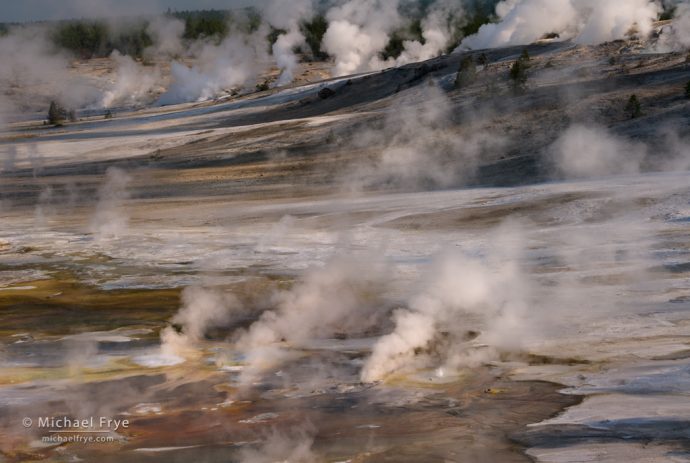
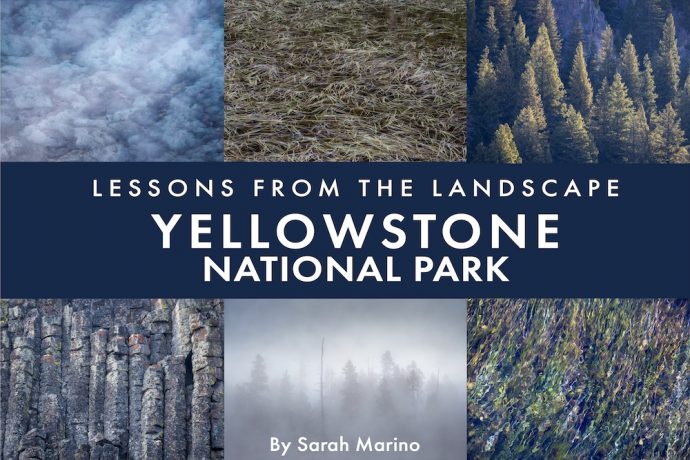
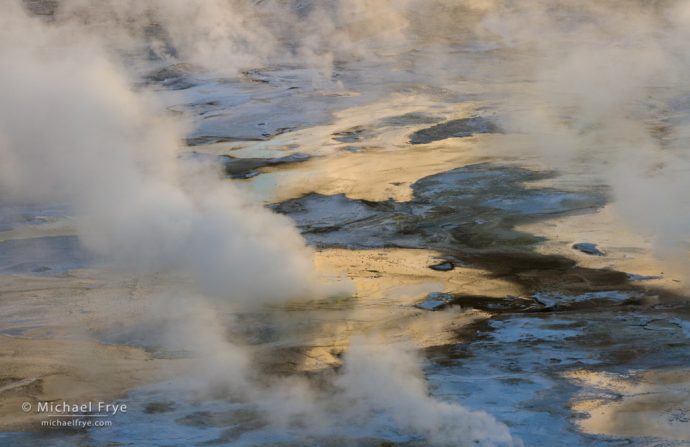
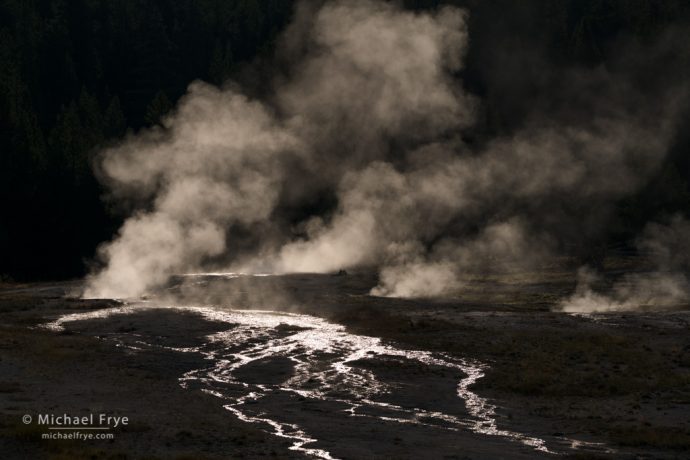
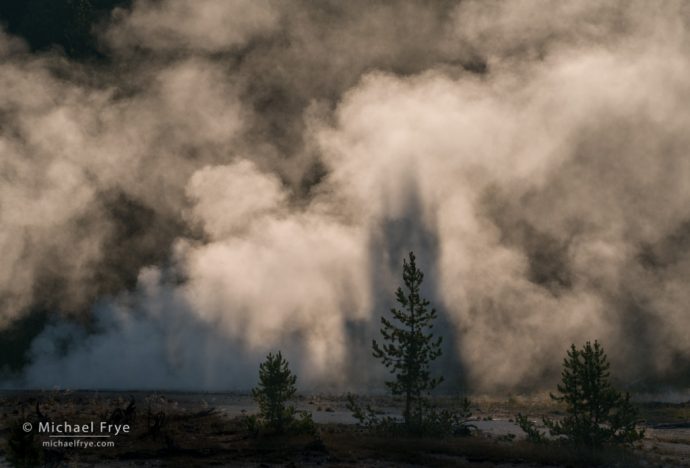
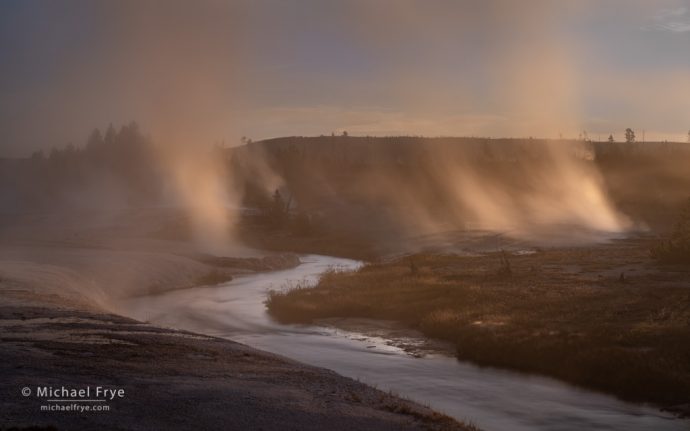
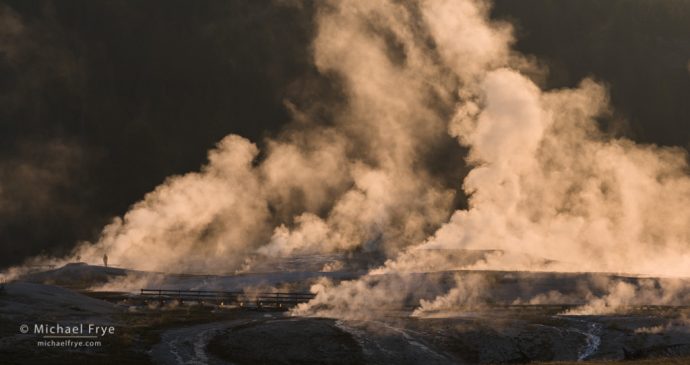
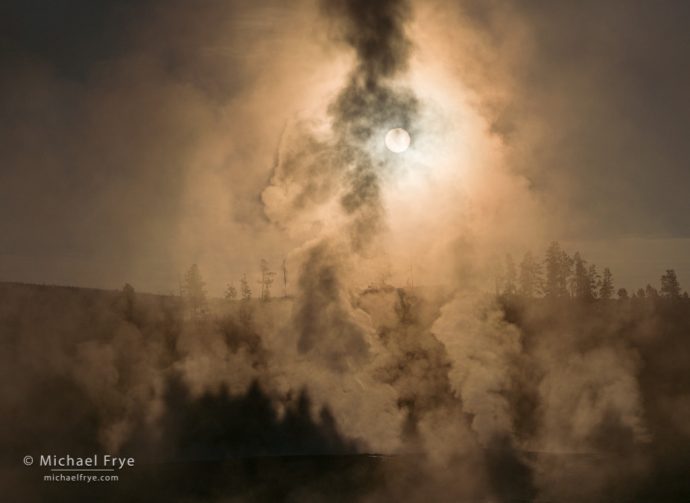
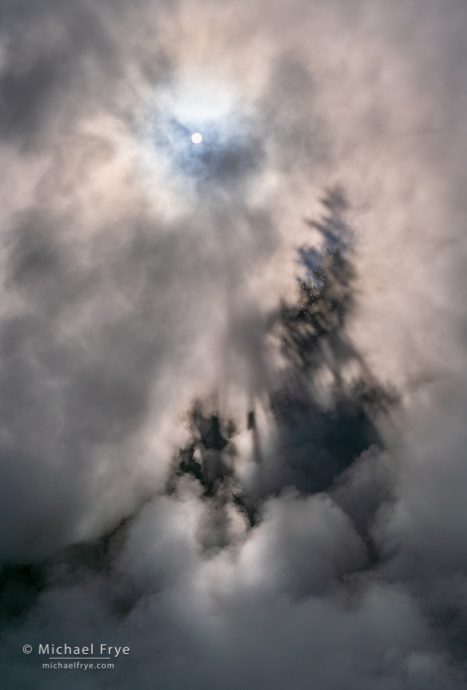








Mesmerizing images, Michael! I purchased Sarah’s book, and I need to find some time to properly digest it. I know she’s going to be inspiring!
Thanks Vivienne, and I hope you enjoy the book!
My wife and I just got back home from this amazing trip to Yellowstone and other places. The geysers are just awesome to see and I took many images till my battery went dry. Anyway it was a wonderful trip! Thanks for sharing your geyser images. Just beautiful.
Glad you enjoyed Yellowstone Randy! It’s a wonderful place.
I have been going here since I was 16. That means 60 years. I usually include some time in the Tetons. We are so lucky to have these places and close to our California Sierra homes.
Sun and Mist is particularly fantastic.
Thanks John. I’m happy to hear that you’ve had such a great connection to this area for long. And yes, we’re lucky to live relatively close.
Michael, lovely to see your photos, as always. I was supposed to have visited Yellowstone and the Grand Tetons last June, but the world changed!
I am hoping to visit maybe next year if we can from the UK. I am planning to purchase Sarah’s book for inspiration.
Looking forward to seeing some more photos soon.
The world did change, didn’t it? I hope you do get to visit next year. Yellowstone is wonderful.